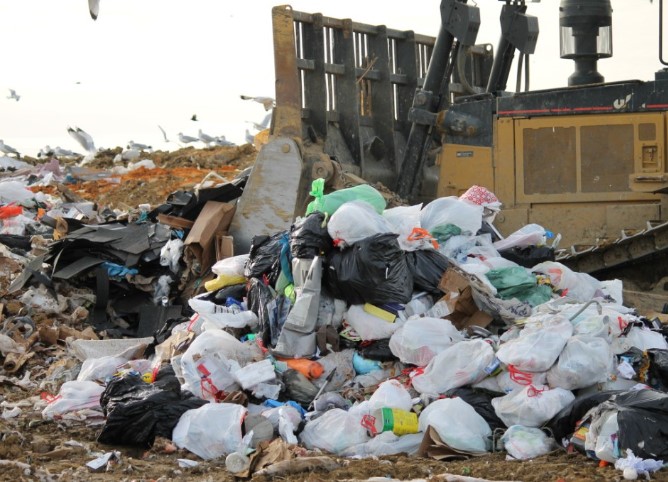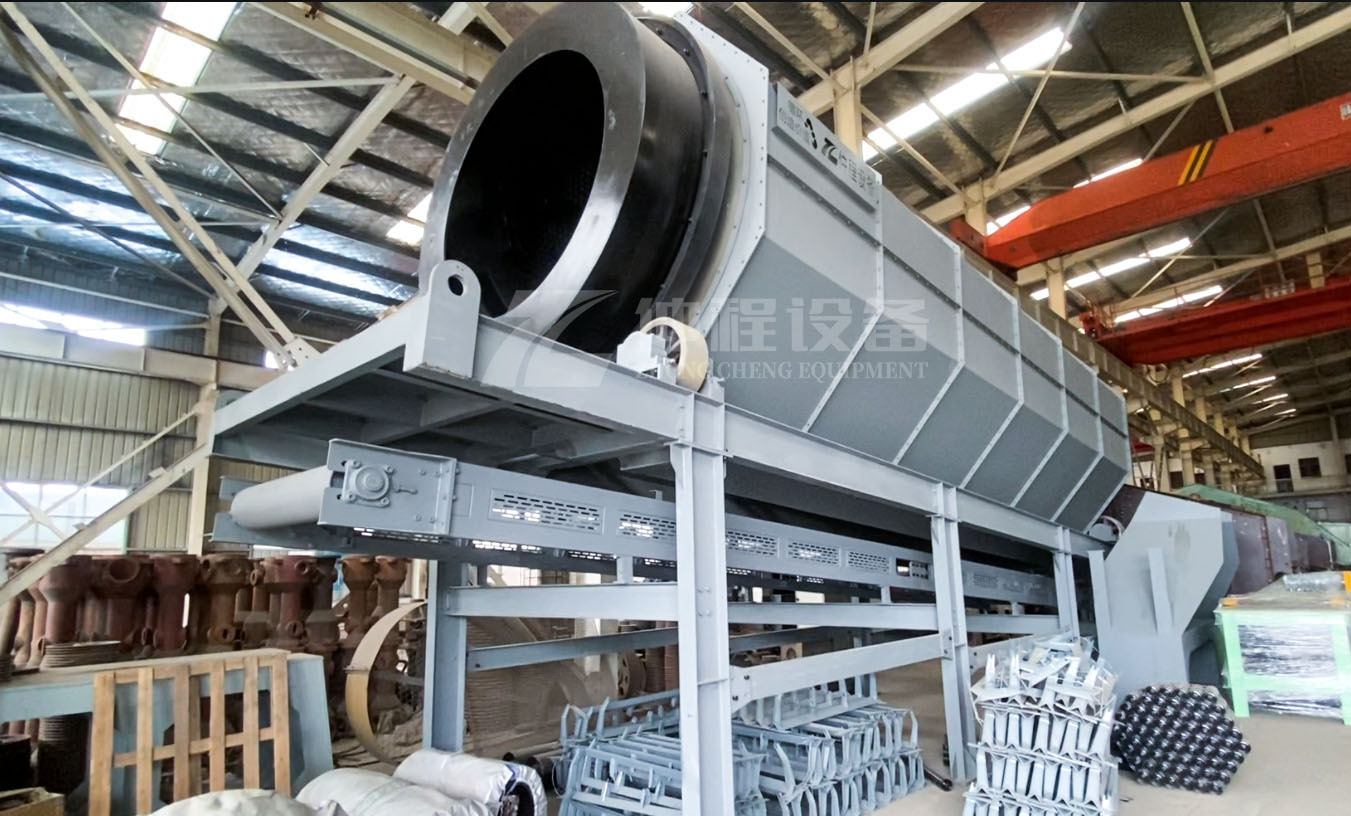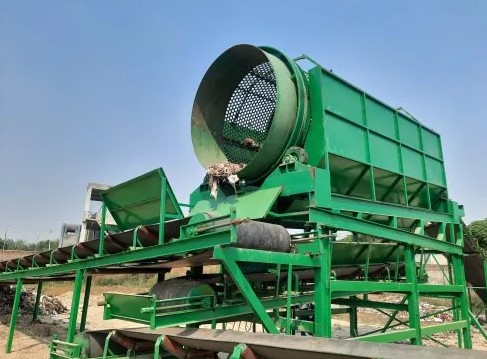Trommel screen for household waste sorting equipment
Introduction
As the world grapples with the challenges of waste management, the demand for efficient and effective waste sorting technologies has never been higher. One such technology that has proven to be indispensable in the field of waste processing is the trommel screen. In household waste sorting equipment, trommel screens play a crucial role by enabling the separation of different materials based on size and type. This article explores the role, benefits, and applications of trommel screens in the context of household waste sorting and highlights why they are a key component in modern waste management systems.

What is a Trommel Screen?
A trommel screen, also known as a rotary screen, is a mechanical screening machine that is used to separate materials based on size. It consists of a rotating cylindrical drum with perforated walls through which different-sized particles can pass. As the drum rotates, materials are fed into it, and smaller particles pass through the holes in the drum while larger particles move along its length. This process effectively sorts the material by size, making trommel screens an essential part of waste sorting operations.
Working Principle of Trommel Screens
The trommel screen's operation is relatively straightforward yet highly efficient. Waste materials are fed into the trommel drum, where the rotational movement causes the materials to be lifted and dropped, creating a tumbling action. This motion allows the smaller particles to pass through the screen openings, while larger pieces move to the end of the drum and are discharged separately. The angle of inclination, speed of rotation, and the size of the screen apertures can be adjusted to optimize the screening process, depending on the type of waste being processed.

Applications in Household Waste Sorting
Household waste is a complex mixture that includes organic matter, plastics, metals, paper, glass, and other materials. Sorting these materials efficiently is a challenging task, and trommel screens are ideally suited for this purpose. The primary applications of trommel screens in household waste sorting include:
Size-Based Separation: Trommel screens are particularly effective at separating materials based on size. This is essential in household waste sorting, where organic matter needs to be separated from plastics, metals, and other recyclables. Smaller organic particles can easily pass through the screen, while larger non-organic materials are retained.
Pre-Treatment of Waste: Trommel screens are often used in the pre-treatment stage of waste processing. By removing smaller particles and debris, they prepare the waste for further sorting processes, enhancing the efficiency of subsequent equipment like ballistic separators and eddy current separators.
Composting Operations: For organic waste, trommel screens play a critical role in composting operations by separating fine compostable material from larger contaminants. This ensures that the composting process is faster and more efficient, resulting in high-quality compost products.

Benefits of Using Trommel Screens in Waste Sorting
The use of trommel screens in household waste sorting offers several significant advantages:
Efficiency: Trommel screens are highly efficient at separating materials based on size, which is crucial in waste sorting operations. Their ability to handle large volumes of waste makes them ideal for municipal waste processing facilities.
Versatility: One of the key advantages of trommel screens is their versatility. They can process a wide range of materials, including wet, dry, sticky, and abrasive waste, without clogging or loss of efficiency.
Low Maintenance: Trommel screens have a simple mechanical structure with few moving parts, which translates to low maintenance costs and reduced downtime. This makes them a cost-effective choice for waste sorting operations.
Customizable Design: Trommel screens can be customized to suit the specific requirements of the waste sorting facility. Factors such as drum size, screen aperture, and rotational speed can be adjusted to optimize the separation process for different types of waste.
Drum screen parameter:
| Model | Screen Size (mm) | Feeding Size (mm) | Drum Diameter (mm) | Drum Length (mm) | Capacity (t/h) | Power (kW) |
| GT0513 | ≤20 | ≤80 | 500 | 1300 | 1-5 | 3 |
| GT0813 | ≤20 | ≤80 | 800 | 1300 | 5-10 | 4 |
| GT1015 | ≤20 | ≤80 | 1000 | 1500 | 10-15 | 5 |
| GT1020 | ≤25 | ≤80 | 1000 | 2000 | 15-20 | 5.5 |
| GT1225 | ≤25 | ≤100 | 1200 | 2500 | 20-50 | 7.5 |
| GT1530 | ≤25 | ≤100 | 1500 | 3000 | 40-70 | 11 |
| GT1545 | ≤25 | ≤100 | 1500 | 4500 | 70-100 | 15 |
| GT1848 | ≤50 | ≤100 | 1800 | 4800 | 100-150 | 22 |
| GT2055 | ≤50 | ≤100 | 2000 | 5500 | 150-200 | 30 |
-
 Trommel screenTrommel screen, also known as drum screens, are widely used in various industries for sorting and separating materials.Get Quote
Trommel screenTrommel screen, also known as drum screens, are widely used in various industries for sorting and separating materials.Get Quote -
 Crop straw double shaft shreddApplications:Biomass Energy Production: Shredded straw can be used as a feedstock for bioenergy plants to produce electricity or heat.Livestock Feed: Reduced-si...Get Quote
Crop straw double shaft shreddApplications:Biomass Energy Production: Shredded straw can be used as a feedstock for bioenergy plants to produce electricity or heat.Livestock Feed: Reduced-si...Get Quote -
 Zhongcheng Air Drum SeparatorAir drum separators effectively separate lightweight materials (e.g., plastics, paper) from heavier materials (e.g., metals, glass). This high efficiency is cru...Get Quote
Zhongcheng Air Drum SeparatorAir drum separators effectively separate lightweight materials (e.g., plastics, paper) from heavier materials (e.g., metals, glass). This high efficiency is cru...Get Quote
-
2023-01-13Bag OpenerBag opener or bag opener system is a mechanical device used to automatically open and empty bags containing bulk materials. This system is commonly used in indu...
-
2024-04-13Wobbler FeederWobbler feeder is a type of feeding equipment that uses rotating elliptical bars, known as wobblers, to separate materials based on size and type before they re...
-
2024-08-07Efficient Material Separation with Bounce ScreensThe ballistic separator is an important equipment with separation function designed for the sorting of inorganic particles in the coarsely crushed waste.
-
2023-01-12WindshifterWindshifter (Air Drum Separator ) is the ideal solution for separating all kind of waste types into two fractions, heavy and light. The robust construction and ...
-
2024-07-12Crush to Create: The Ultimate Eco-Friendly Plastic Shredder RevolutionThe working principle of a plastic shredder is mainly to tear large plastic materials into small pieces or fragments through mechanical force, in order to facil...



